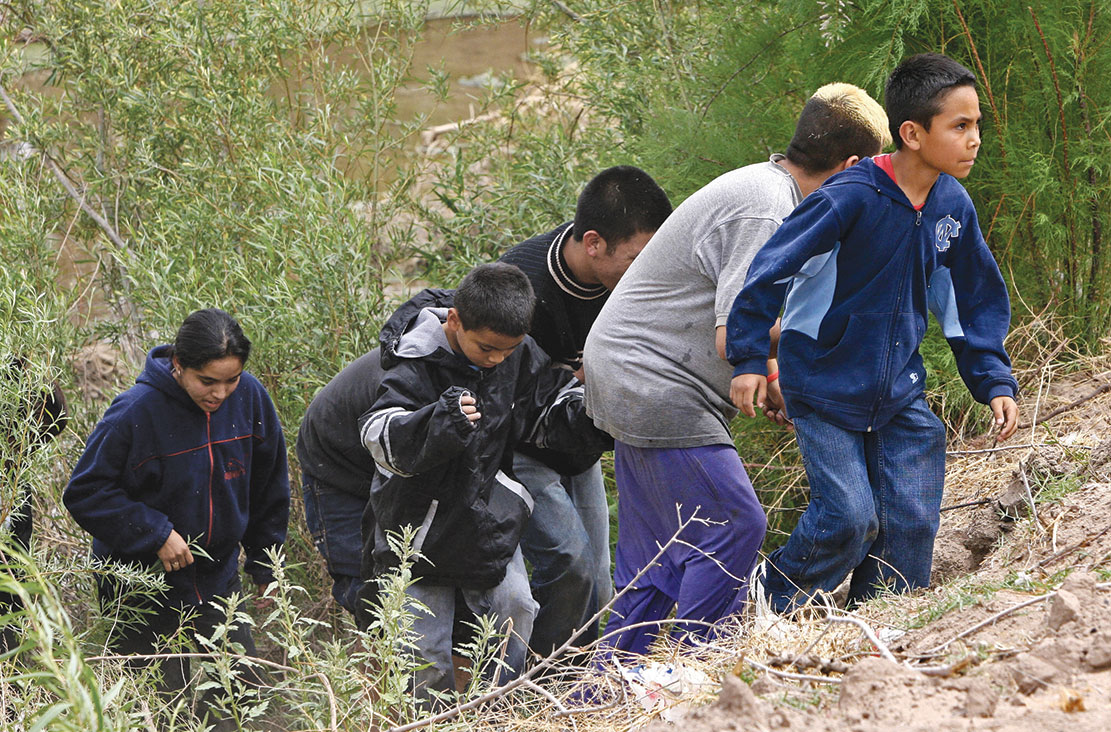Faculty roundtable: U.S. border crisis?
How can the United States address the immigration crisis at its southern border?

Faculty roundtable: U.S. border crisis?
How can the United States address the immigration crisis at its southern border?
More than 70,000 unaccompanied child immigrants were detained at the U.S.-Mexico border in 2014. The magazine asked three TCU faculty members to share their ideas about some possible long-term solutions.
David P. Sandell
associate professor
anthropology
The problem lies in a history of asymmetrical relations between the U.S. and Latin American countries. Highlights include World Bank-backed development initiatives, the North American Free Trade Agreement (NAFTA), so-called “economic adjustments” and neoliberal policies.
 One doesn’t have to know precisely what these highlights are. Pay attention to the outcomes: an allocation of wealth among the few and impoverishment of the masses. The asymmetry refers to the United States’ power, leveraged every step of the way to ensure that this country claims the lion’s share of wealth.
One doesn’t have to know precisely what these highlights are. Pay attention to the outcomes: an allocation of wealth among the few and impoverishment of the masses. The asymmetry refers to the United States’ power, leveraged every step of the way to ensure that this country claims the lion’s share of wealth.
Some might say, “Poverty in Latin America is good because it makes certain that America’s labor pool for agriculture, food processing, and other industries stays full and wages low.” Scholarship on the U.S. Border Patrol indicates that unofficial policies aim at this objective. And the meal that an American citizen enjoys today, like every meal for the past 150 or more years, comes by way of an indirect subsidy, saving unimaginable amounts of money.
The children are a symptom of a systemic problem. The system is hostile to families in Latin America and beneficial first to the wealthy and second to the average U.S. citizen accustomed to subsidized consumption. For this reason, care for these children is everybody’s responsibility.
Long-term solutions to the problem of poverty include fair trade policies, a U.S.-Mexico contractual labor program, and the establishment of living wages in the U.S., Latin America and the underdeveloped world.
Vanessa Bouché
 assistant professor
assistant professor
political science
We must understand the circumstances of and motivations behind each individual child’s migration. Was this child lured or recruited by someone making false promises? Is she seeking educational and/or economic opportunities to improve her family’s situation?
Policy solutions must take into consideration different circumstances and motivations and must be undergirded by a commitment to respect the human dignity of each child.
Jack Hill
 professor
professor
religion
the detention of unaccompanied child immigrants is both a public policy and human rights issue. As the former, any “long-term solution” must consider and to some extent address the underlying causes of the mass migrations of youth in the first place — poverty and the absence of realistic legal immigration options. As a human rights issue, these children should be educated, mentored and cared for — in a massive governmental, private sector and [non-government organization] collaborative initiative.
Share your view
Email us your opinion in 250 words or less at tcumagazine@tcu.edu.

Your comments are welcome
Comments
Related Reading:
Campus News: Alma Matters
TCU’s Library Celebrates a Century
Uncover hidden gems of the academic hub, from vintage mechanics to modern masterpieces.
Campus News: Alma Matters
Infographic: TCU’s Shared Values
The Board of Trustees adopted four TCU values after considering input from more than 4,000 constituents.